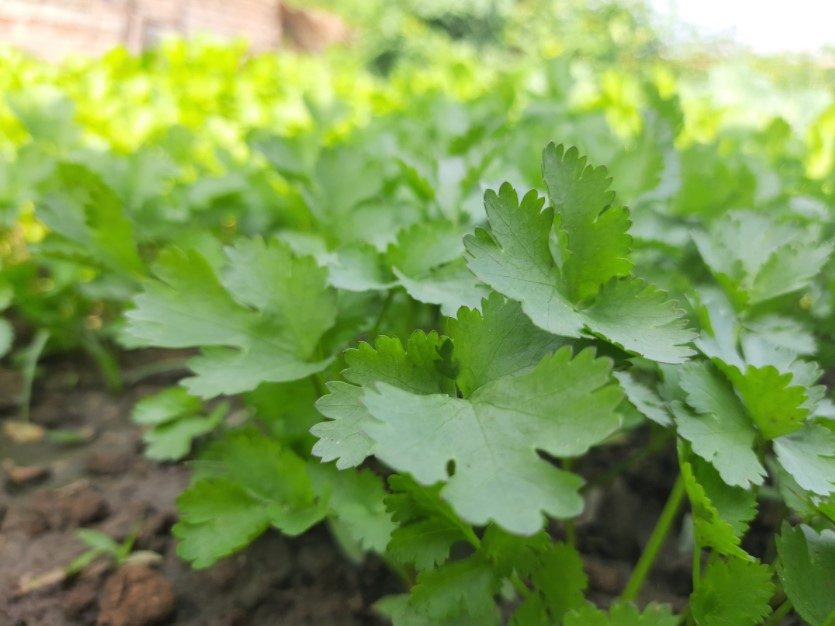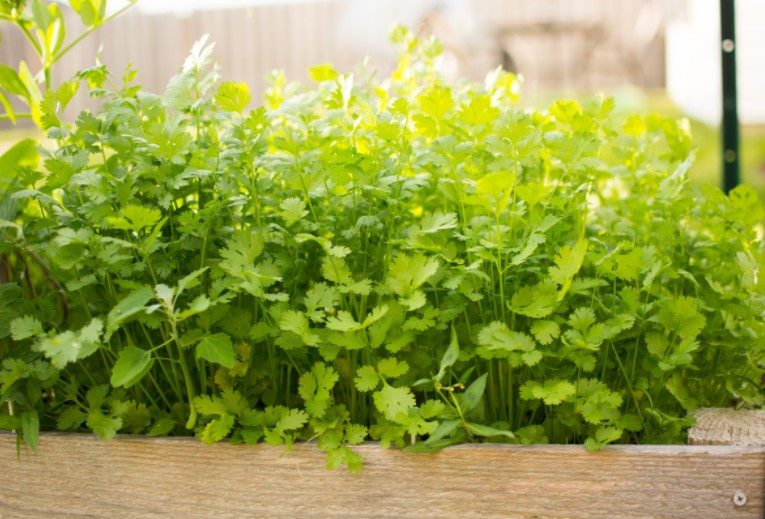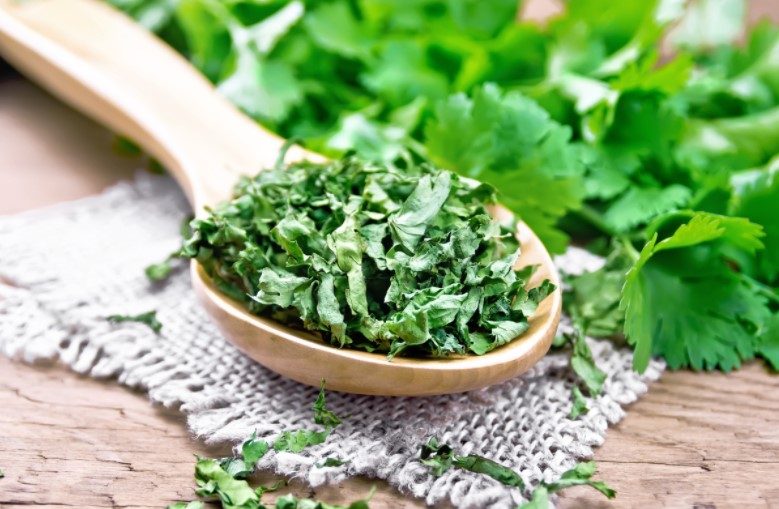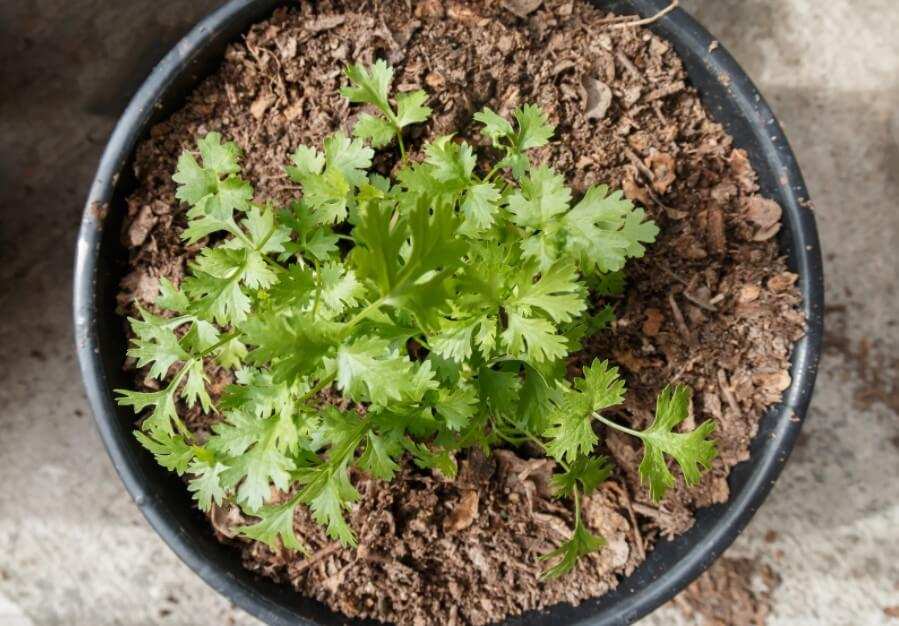Herbs are the perfect addition to the delicious home-cooked meal. In my case, picking fresh herbs from my own garden is as satisfying as cooking the meal itself. One of my favorite herbs to grow as a perfect match for various meals is cilantro. What makes it more interesting to me is the fact that it is fairly easy to grow and care for.
If you have a space for an herb garden but haven’t decided to grow cilantro yet, you should definitely plan for it right now. Both the leaves and seeds of cilantro plants are the essential addition to most homecooked meals as well as a wide range of world cuisines.
Scroll through the rest of this article to find out how to grow cilantro and learn some useful tips for caring for it.
In this post
Getting to Know Cilantro

Rich in taste and aroma, cilantro (Coriandrum sativum) is a versatile herb that can be added to various recipes. Native to North Africa and Mediterranean, this herb comes from the same family as carrots. It also has a close relation to some other aromatic herbs, such as dill, fennel, and parsley.
The entire plant of cilantro is actually edible, but the leaves and the seeds—called coriander, are more popular to use.
While the cilantro leaves are listed under the category of herb, coriander, or the seeds of the plant are more likely to be used as a spice. You can harvest both of them when the plant grows leaves and develops the seeds in the ground.
Cilantro comes in different varieties. However, if you are looking for the best leaves as an addition to various meals, some recommended varieties to grow include Leisure, Confetti, Calypso, Costa Rica, and Long Standing or Santo.
They are categorized as slow-bolting varieties which produce the best kinds of leaves for any dish.
Step-by-Step of Planting Cilantro

The guide on how to grow cilantro is actually easier than you think. You can either get started with store-bought seedlings or use the actual seeds straight from the plant.
The latter is more preferred by most gardeners because it is considered a cost-effective solution.
Here are the simple steps you should follow to grow cilantro from seeds:
- Before putting the seeds in the ground, prepare loamy and well-drained seeds.
- Add some compost to the planting area to make it loaded with enough nutrients for the seeds.
- Use a trowel to plant the seeds about a half-inch deep in the ground.
- Space cilantro seeds between 1 and 2 inches from each other. If you plant in rows, the space of each row should range around 12 inches.
- Make sure all seeds are perfectly covered by soil before you end the process.
- Once the seeds are planted, water the soil carefully using a watering wand.
- After 7-10 days, the seeds will start to germinate, and you will see some sprouts appear from the planting area.
Cilantro Gardening Tips to Remember
In addition to the steps of how to grow cilantro, there are some gardening tips to remember if you want to have the best-planted cilantro in your garden. As you care for your cilantro plant, do take note of the following tips:
Plant Spacing
Give the cilantro seedlings a space to grow fresh, healthy leaves by thinning them to 6 inches apart.
Fertilizer
During the growing season, cilantro plant should be fertilized about once or twice. Use ¼ cup of nitrogen fertilizer for every 25 feet of planting row. Apply it carefully to prevent the plant from being overly fertilized.
Mulching
Mulch the planting area to get rid of weeds. This should be done regularly every time you see the weeds appear above the soil. Do shallowly to avoid root damage because of growing weeds.
Transplantation
Young cilantro plant can be easily transplanted. But because it has taproots, grown cilantro plants will not work well with transplantation and difficult to be moved during its growing phase. That being said, you should choose the same exact growing spot right from the beginning.
Pests and Diseases
Cilantro is susceptible to several pests and diseases, including mildew, aphids, fungal wilt, and leafhoppers.
Insecticidal soap comes in handy to control insects. Simply use it whenever the insects are spotted on the leaves.
Meanwhile, to deal with mildew and fungal wilt, the best way to do it is by regularly cleaning the debris around the plant.
Planting Schedule
Make sure you should always stick to the planting schedule because cilantro is a fast-growing plant.
Set the entire gardening plan with the aim of harvesting fresh cilantro during spring, fall, or early winter if you are living in a milder climate.
Harvesting and Storing Tips
After learning how to grow cilantro, it’s time to learn the proper way to harvest and store the fresh herb. Keep these tips in your mind when doing so.
Harvesting Cilantro

In addition to the easy steps of planting and caring for it, another great thing about growing this herb is its continuing harvest. You can harvest the leaves several times until the season ends.
The best way to begin is harvesting them while they are low. Just cut off the plant as soon as it grows the stalk. The seeds will automatically drop and self-seed.
What you have to do next is caring for it all over again, which means regular watering and fertilizing.
You can also harvest the leaves individually whenever you need them to complete any tasty dish. If the leaves are still small, you just need to cut them around 1-2 inches off the plant crown.
However, if they are taller, the length of the cutting area can be increased according to your needs.
When coming to the end of the season, you can remove the entire plant before it dies naturally because of the weather.
Removing the plant completely makes you lose the chance of a continuing harvest. Therefore, you have to plant the seeds again and repeat the planting process as the new season begins.
Storing Cilantro Leaves

Cilantro gives you its best taste when it is used immediately after being harvested. However, in some cases when you need to store the herb for later use, make sure you do it properly to prevent the leaves from being wilted.
There are two possible options of storing cilantro leaves: drying or freezing them. If you prefer the first method, all you have to do is hang the leaves in a warm place and wait for them to be fully dried.
Meanwhile, if you choose to go with the other method, you should put the leaves in a resealable bag, then store the package in the freezer until the next use.
Cilantro leaves that are dried or frozen may give a different taste to your dish. In spite of it, both methods will keep the leaves in a proper way for a quite longer time.
FAQ about Growing Cilantro
At this point, you practically know how to grow cilantro as well as how to harvest and store it. However, you may have some questions unanswered along the planting and gardening journey.
Rest assured, because I have compiled some additional information just for you. They will answer the common questions you are still wondering about growing this aromatic herb.
When is the best time to plant cilantro?
The best time to plant cilantro is in early spring, when the last winter frost is gone. This plant can also adapt to the cooler weather of fall.
Where does cilantro grow best?
Cilantro will grow best when it is planted in a sunny location that allows the plant to self-seed as it is supposed to do. Your herb garden or a sunny corner in your vegetable garden are considered the best place for cilantro to grow.
Can I plant cilantro in a container?
Yes, you can. You can actually make do with some deep containers, as long as you use well-drained soil.
How often should cilantro be watered?
You should keep cilantro seeds moist all the time, so it is best to water them regularly during the germination process. One inch of water is needed per week to let the seeds grow best. However, after the leaves grow, the portion of water should be reduced to prevent overwatering.
When can I harvest cilantro?
Cilantro belongs to the fast-growing herbs. The harvesting can be done in less than a month after you plant it. Another good news is that you can plan it to be harvested continuously until the end of the growing season.
That concludes the comprehensive guide on how to grow cilantro. As you come to the end of this article, always remember to follow the simple tips presented above every time you are in need to grow cilantro in your own herb garden.
If you can do it right—which I’m sure you can—you’ll get the best reward of all: having easy access to use fresh cilantro for a wide variety of your homecooked meals.
It’s a perfect way to enrich them with taste and aroma coming straight from a garden you are raising and caring for. Isn’t it pleasing? If you ask me, I would answer clearly: of course, it is!

